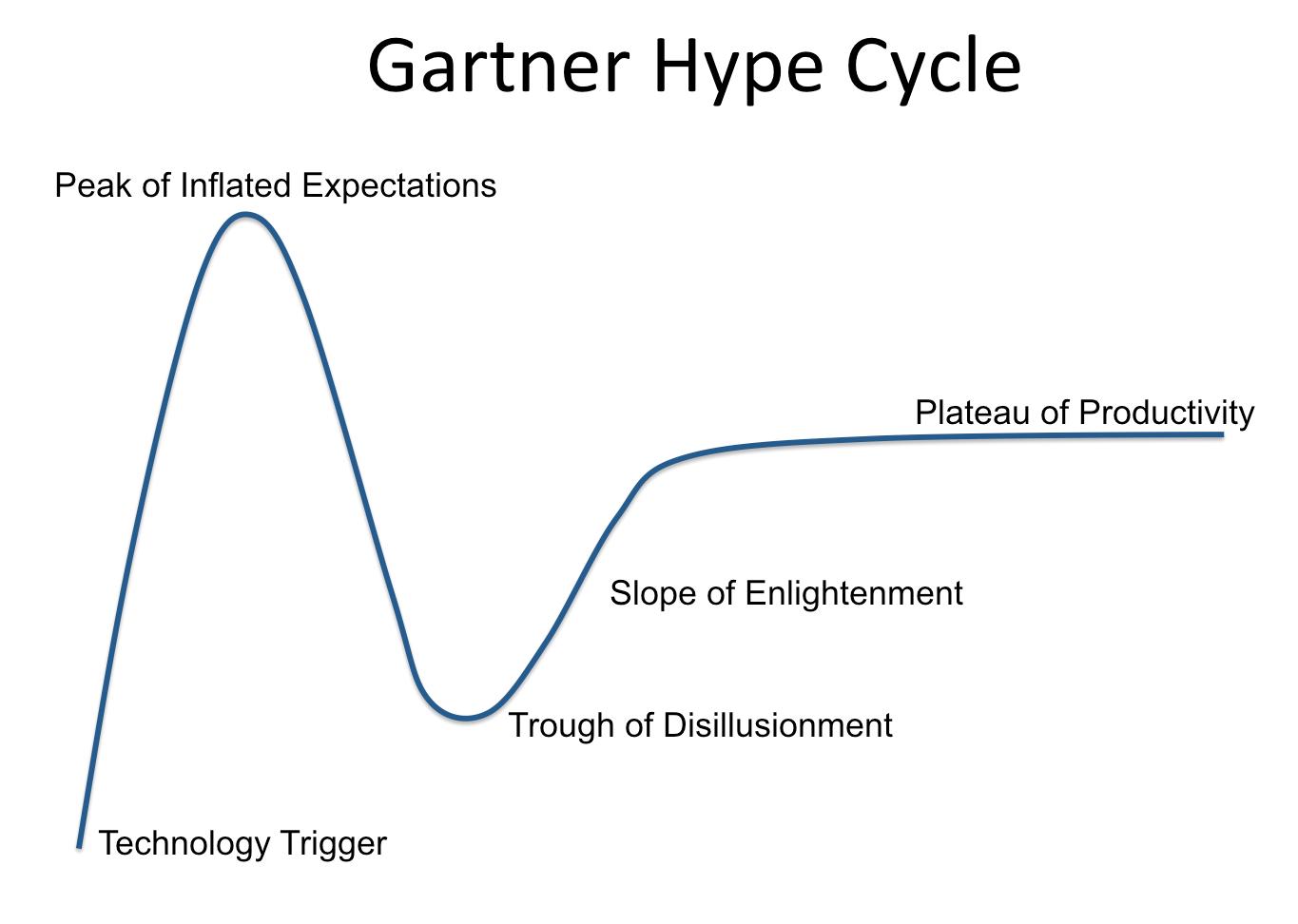Let’s combine blockchain technology with virtual reality (VR)! It sounds super exciting, combining technologies of the future. However, not every proposed combination of technologies works, or even makes sense.
With the ICO mania of this year, entrepreneurs are looking for buzzwords to receive millions of dollars in funding, and combining VR and blockchain fit right in this category. Do they go together though?
There are a few crypto-issuing companies that have been combining blockchain technology with VR such as Voxelus, VibeHub and Decentraland. These projects raise key questions: at what stage is the VR industry at the moment, does it make sense to combine VR with blockchain, and can the two technologies boost each other?
Let’s dig into it.
The Virtual Reality Industry
No matter how you put it, our reality is kind of boring. We know what our environment looks like, and we and our environment regrettably have to abide to the laws of physics. Virtual reality is paving the way for an alternative reality, one that only exists digitally. The idea of VR has been around since the 70s; however, our technology hasn’t been able to create virtual worlds and applications until recently.
Not much different from the current blockchain and crypto craze, VR experienced the same levels of exuberance. After the launch of the Oculus Rift, tech investors were certain VR was going to change everything regarding entertainment and would rapidly move to disrupt other industries. This excitement was, typically, tackled by realism after which VR stocks plummeted.

The VR industry has been continuously developing, now with more realistic expectations. Both VR hardware and software have been gradually improving in capabilities and decreasing in cost. We haven’t seen the true potential of VR by a long shot, and don’t forget that with new technologies, people generally overestimate the impact on the short term and greatly underestimate its impact in the long run.
That being said, the VR industry still has a long way to go. The hardware is expensive and requires a lot of computing power. If someone opts to go for cheaper and weaker hardware, the frames will be delayed which leads to disappointing experiences and could cause VR sickness.
Sales have been rather disappointing. The Sony Playstation VR has only sold a little over a million headsets globally since October 2016, Facebook’s Oculus Rift has completely lost momentum and customers, and HTC has sold Vive, its VR division.
These are the setbacks VR has experienced in the short run. In the long run, tech and industry experts still envision a bright future for VR.
VR has thus far mainly been mentioned as a disruptive force for the entertainment industry. However, there are other uses for VR; educational, scientific and training applications seem highly promising and are rapidly being developed. We’ll likely see more applications for VR as the hardware becomes cheaper, a framework for VR software is developed, and when the market is buying VR headsets en masse.

Are VR and Blockchain a Match?
While the VR industry is gradually developing, the blockchain market is exploding. These two very exciting technologies stimulate one’s creativity as the possibilities of both seem limitless. This makes you wonder: is there a justifiable combination of the two technologies that can make us super excited, or are we just combining two buzzwords?
There are several reasons why blockchain technology has us so excited, and some of them can be applied in VR. The main elements of blockchains, that are also applicable to VR, are the elimination of third parties, micro-economies, unique and limited assets, smart contracts and unfalsifiable proof of ownership and intellectual property.
Let’s see how these characteristics relate to VR technology.
Storing Data
Content created for VR can be safely stored with the use of blockchain technology. As of now, there is no set industry standard for this. Blockchain technology provides an excellent way of storing VR data and is superior to the methods we currently use. Benji Rogers discusses this concept in depth and proposes a .vr format for VR content. This would mean that VR would cause a shift from DVDs, Blu-ray and USB to a whole new data storage system, completely based on the blockchain.
As VR is a very young industry, there are no set industry standard for this yet, meaning that it could easily implement a blockchain solution. This is in contrast to current entertainment and software industries which are highly dependent on existing storage solutions. Blockchain technology could make an entrance into the mainstream by being the backup system for VR applications.
Watching and Protecting Copyrighted Material
In a future where the two technologies of blockchain and VR are combined, the protection of copyrighted materials would be much easier. Say you have a VR headset and you want to watch a movie. Through the use of a smart contract, you’ll rent a movie you like, watch it and after you’ve seen it, the smart contract will be terminated and you can’t access the movie again without paying for it.
If we were to run, for instance, VR movies completely on the blockchain, each uploaded movie will have to be accepted by the blockchain network. This means that the creator of the movie will be identified, and once the movie is allowed to enter the blockchain, the movie and its producer are set in (binary) stone.
Any attempts to upload a movie that’s already on the blockchain will easily be noticed by the network. This has an additional important quality, namely that it will be easy to identify any creator of content and directly pay the creator of content for his or her work without the interference of third parties.
Once accepted, the movie will be tokenized, meaning that the movie will be a non-divisible, unique and identifiable unit on the blockchain. To gain access to the movie, you’d have to adhere to the requirements set by the owner of the movie, which will generally mean that you pay with crypto to see the movie.
Copying a movie from the blockchain will be the same as copying a bitcoin, thus close to impossible. Same goes for VR games, software packages, educational programs and whatever we come up with over the next few years.
Research Projects
Blockchain would allow for VR cooperation in the form of open-source projects, intellectual cooperation and user-generated content. Users are able to work together on open-source projects in a virtual environment, while every adjustment and improvement is stored on the blockchain and the contributors will be updated.
Academics can do their research in perfectly global teams while keeping unwanted eyes out. This might seem like something possible without VR, but imagine archeologists, Mars venturers or astronomists. These scientists are limited to locations and equipment such as telescopes and archeological sites, or an inaccessible planet like Mars.
VR allows scientists to store these visual properties in a virtual environment, making it possible to collaboratively observe a supernova, build a virtual colony on the red planet or explore an ancient Aztec ritual site. Blockchain allows this data to be safely stored, protects it from tampering and gives an incredible new dimension for research and discoveries
Unlimited Virtual Worlds
Although the above two examples are solid combinations of the two technologies, they are not the most powerful potential applications. The ultimate combination of blockchain and VR that we can imagine now is intriguing to say the least.
The most exciting mix of VR and blockchain technology are immersive worlds. Endless, digital worlds in which everything we can imagine can come true.
According to former Disney imagineer Jesse Schell:
I think it’s very likely that whatever is the Space Invaders of VR is going to have a strong user-generated content component.
At first, you might think that this solely extends to gaming, but that’s just the tip of the iceberg. We’re talking about full-on, lose-yourself, digital worlds in which people’s brains walk around, interact, trade, consume and express themselves.
Pre-blockchain, we needed companies to create worlds like that. They have to run the servers and make sure the game remains exciting by providing updates. These companies would be in full control of every component of the game.
An online world such as World of Warcraft is managed by a central party. If Blizzard Entertainment, the company behind WoW, went bankrupt, thousands of online lives would vanish. Even though this might not be the worst thing that could happen for the users’ health, this means that financial malpractices of a single company could take something important such as a virtual environment away from thousands of users. The decentralization of these worlds prevents that from happening.
With the use of blockchain, the data of these worlds would be permanently and securely stored. Every user or inhabitant of such a virtual world can simultaneously function as a host or server. With an increasing number of players, it will become increasingly hard for a digital world to disappear.
Well, immersive worlds could still disappear; but it would be based on the decisions of the market. Everyone capable of programming VR applications can start developing a virtual environment and, if other users like it, this world will grow. If they don’t, the world will die out and users will simply move to another digital space.
We’ll be able to enjoy virtual worlds that are governed based on pure democracy through smart contracts and voting tokens. Blockchains do offer the same deal to the real world, but because of the way our world is constituted, it could take a very long time, if ever, for this to actually happen. Those in power are never too inclined to share it.
Additionally, items created and owned in such virtual worlds are secured by the blockchain they run on. Developers that create value through new items, quests, characters and structures can protect their creations in the blockchain and earn crypto by selling them. And what will they sell these binary assets for? You guessed it, cryptocurrencies.
Cryptocurrencies are made for digital environments and they operate perfectly in it. I’m not saying it’s advisable to do so, but if you want to challenge someone to a game of FIFA and add some monetary stakes, all you need is a smart contract and a digital currency. Doing that with fiat money would be more troublesome and harder to enforce.
I can imagine walking through a virtual world and seeing a mind-blowingly beautiful casino which offers gambling. I play some cards, win some Litecoin and be on my way. I stroll down a virtual marketplace, where developers are selling their latest creations. I decide to spend my recently-won Litecoin on a jetpack and fly back to my flying waterfall apartment, hopefully to turn the headset off and return to the real world.
A Killer Combo
These highly promising combinations of blockchain and VR technology surely promote the idea that VR productions should focus on integrating blockchain technology in their development.
The idea of decentralized virtual worlds, open-source scientific research in 3D environments and copyright-protected entertainment with profits going directly to its creators are intriguing to say the least.
As of now, there are only a few companies working on combining the two technologies; however, there are huge opportunities in this space yet to be grasped. I’ll surely keep my eye out for any developments in this cross-technology space, as I’m exuberantly excited by the possibilities of it.
Let’s go virtual, with blockchains.

